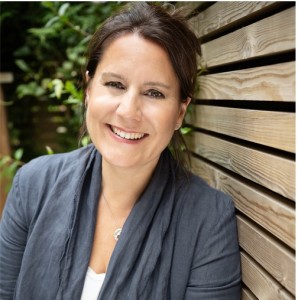Before we know it, our homes can reflect some of the chaos of our lives. If you’re getting to the stage where you feel the urge for a big clear out, then you may need some advice on where to start.
Lisa Salmon talks to psychotherapist and home organisation expert Helen Sanderson, whose new book tackles the emotional aspects of hoarding clutter.
“Ultimately, clutter is decisions that haven’t been made,” says psychotherapist and interior designer Helen Sanderson (helensanderson.com), author of The Secret Life Of Clutter. “Things end up in a pile, container or drawer because that seems easier than deciding where to put them or what to do with them.
“I believe there’s a balance to be struck in our homes between chaos and order, allowing us clear, harmonious spaces that give us room to think while still having a healthy amount of stuff that we love, find useful, or simply don’t want to lose.”
Here Sanderson shares useful steps to decluttering your home…
- A cluttered home is like an overgrown garden
Sanderson says it can be useful to think of cluttered homes as overgrown gardens that need weeding, planting and maintaining. “The weeding process is about making all those unmade decisions, such as keep, let go, or action. Planting means creating a plan, placing things in a beautiful, harmonious way and optimally organising what you choose to keep: a place for everything and everything in its place. And maintaining is about building new habits with compassionate self-discipline, so your home supports you to live with greater ease.”
- Create a clear vision
Imagine exactly how you’d like your home to be. Write it down or create a vision board of inspiring images from magazines or Pinterest. Then write down why you want to create space and order – is it for a creative project? Do you want to feel more comfortable inviting people round?
- Understand the reality
Look inside all the cupboards, drawers and boxes and establish a clear picture of exactly what you’re dealing with. “This isn’t to discourage you, but so you can effectively plan your declutter project. It will also help motivate you by creating a tension between where you are now and your vision of where you want to be.”
- Break decluttering into manageable stages
This can be room by room, cupboard by cupboard, or drawer by drawer, says Sanderson. “I recommend you master one room, then move to another. It’s important to experience successes, even small ones.”
- Identify obstacles and how to overcome them
“Once you’ve understood the barriers you might face, put some clear strategies in place to help you overcome them,” advises Sanderson, who suggests you might get a friend to help, or even consider employing a professional organiser or coach.
- Set aside time and remove distractions
Sanderson points out that if someone really loved decluttering, they’d have done it long ago. “Accept that once you start, other things are likely to be much more appealing than sorting out those piles of stuff,” she suggests. “So turn off your phone, cancel other plans and send the family and even the pets out – unless they’re helping.”
- Put some clutter in front of you
Start a timer, collect your stuff and stack it in front of you – so take out a stack of books, paperwork or empty a drawer into a box. “What works best is if you can have someone to help,” says Sanderson. “Their job is simply to bring things to you, and your job is simply to make decisions. No putting things away, just ask: Is this staying or going?”
- Keep, Recycle, Bin, Donate, Action
One by one, decide are you going to recycle, sell, keep, bin, action, or donate each item – these are the core decisions that have to be made, says Sanderson, who advises people to work quickly, trust their intuition and keep going.
She also suggests creating a ‘Don’t Know’ pile to help maintain momentum. “That way, if you aren’t sure, you can put the item there and come back to it later, instead of breaking your flow of decisions.”




















